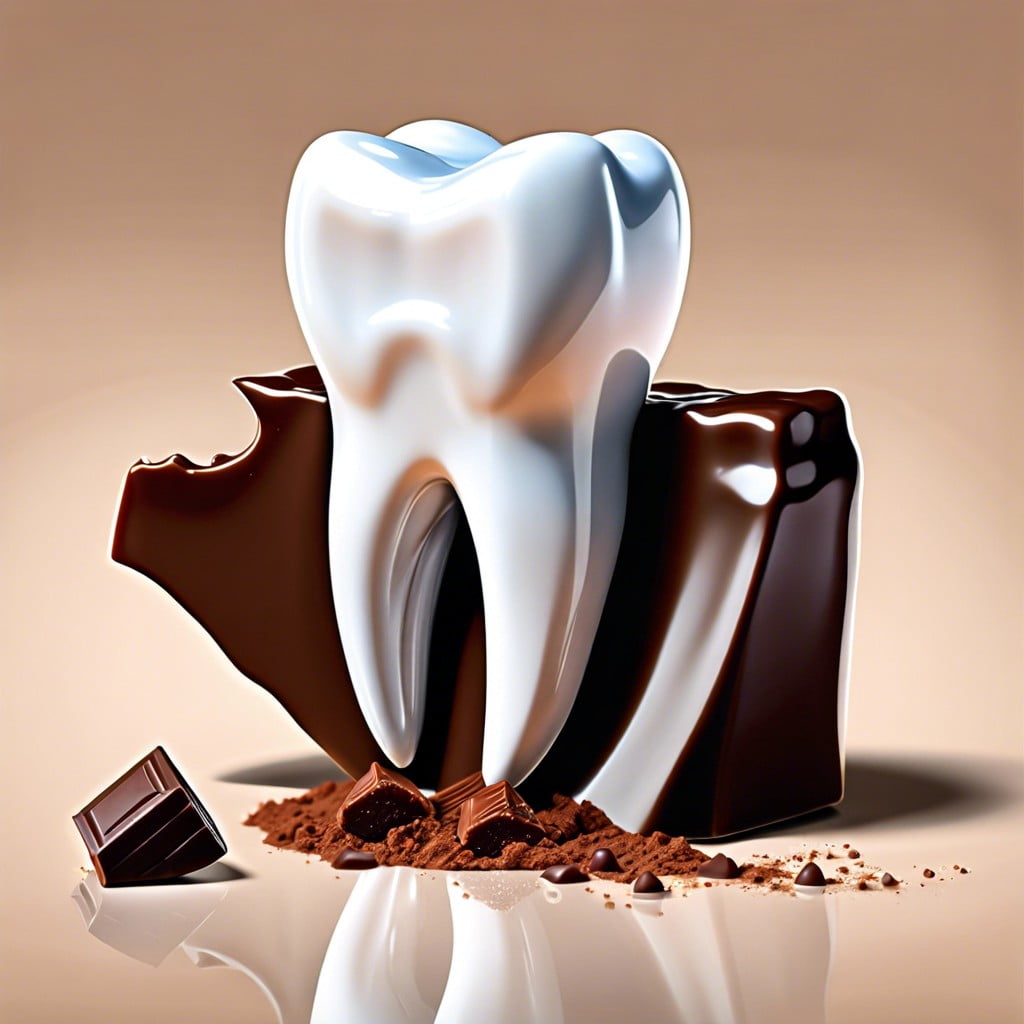This article provides insights into the ideal concentration of dark chocolate to consume for health benefits.
Key takeaways:
- Choose dark chocolate with simple, high-quality ingredients for better health.
- Aim for at least 70% cocoa content for a balance of flavor and health benefits.
- Pay attention to sugar and calorie content when selecting dark chocolate.
- Enjoy dark chocolate in moderation to avoid potential risks and drawbacks.
- Dark chocolate contains more antioxidants and less sugar than milk chocolate.
Inside
Ingredients to Look For

When selecting a dark chocolate for health benefits, focus on three main components: cocoa solids, cocoa butter, and a sweetener, usually sugar. Aim for a product where cocoa solids are the first item listed to confirm it’s the primary ingredient.
A higher cocoa content typically implies less room for sugar and fats, making the chocolate more potent and beneficial. Be wary of potential add-ins like excess sugars, artificial flavors, hydrogenated oils, or unnecessary emulsifiers. These can dilute the benefits and add unwelcome calories.
Keep an eagle eye on the type of sweetener used. Natural alternatives like coconut sugar or stevia may offer a slightly healthier profile than high-fructose corn syrup or processed sugar. Remember, even natural sweeteners should be consumed in moderation.
Ultimately, choosing dark chocolate with simple, high-quality ingredients will serve your health pursuits best.
Cocoa Percentage
Navigating the chocolate aisle can be like finding a needle in a haystack with so many options. It’s important to look at the percentage of cocoa content which should be prominently displayed on the packaging. In essence, the higher the cocoa content, the less room there is for added sugars and fats.
For health benefits, aim for a bar with at least 70% cocoa. This percentage strikes a balance between flavor and the healthful compounds found in chocolate. These high-cocoa-content chocolates are rich in flavonoids, antioxidants that support heart health and can reduce inflammation.
But keep in mind, as the percentage increases, the taste gets more intense. Chocolate with 85% cocoa or higher may be too bitter for some, but it’s worth a try for its higher nutrient content. Remember that balance is key; while higher cocoa content can be better for you, the taste also has to be palatable to make it part of a healthy routine.
Nutritional Information
Paying attention to what’s on the label gives you leverage in making wise chocolate choices. Sure, dark chocolate has perks, but what’s inside matters. Scan for high cocoa content; that’s where the benefit-loaded flavonoids hide out. These nutrients are the real McCoy when it comes to health perks, as they support heart health and may reduce blood pressure.
On the flip side, keep an eye on sugar content. It’s the fly in the ointment, potentially offsetting those health benefits. Typically, higher cocoa equals less sugar – a win-win for taste buds and well-being.
Remember, calories can add up quicker than a bunny in a carrot patch, even with dark chocolate. Moderation is key, so consider it a treat, not a meal. Aim for a small square or two to satisfy your craving without tipping the scales.
Lastly, think fibers and fats. A square of dark chocolate can dish out a few grams of fiber – a welcome surprise. As for fats, they’re not all villains. Cocoa butter consists mainly of healthy fats, like oleic acid, the same found in olive oil. So a little fat in your chocolate isn’t a heartbreaker.
In a nutshell, dark chocolate is like a well-trained dog – it’s bound to do some good, but keep it on a short leash. Too much, and you could be cleaning up a mess.
Risks and Considerations
Consuming dark chocolate has its perks, but it’s not all sweet news. High-flavanol options may benefit heart health, yet these benefits are best enjoyed in moderation. Overindulgence can lead to weight gain due to high calorie content, and some individuals may experience acid reflux or migraines triggered by chocolate. Moreover, chocolates, even dark varieties, often contain sugar and saturated fat, which can negate their healthful aspects if consumed in excess. For those with dairy or nut allergies, caution is necessary since cross-contamination is possible during production. Lastly, chocolate contains caffeine and theobromine, both stimulants, which may affect sleep if consumed late in the day.
Dark Chocolate Vs. Milk Chocolate
Picture this: you’re at the candy aisle, caught in the age-old tug-of-war between team dark and milk chocolate. They might seem like distant cousins at a family reunion but trust me, it’s more like siblings with different personalities.
Dark chocolate’s a bit like the strong, silent type. It packs more cocoa, less sugar, and skips the milk solids, giving you a rich flavor that’s bold and not too sweet. It’s this high cocoa content that brings the antioxidants to the party – think of them as the life of the party for your health.
On the flip side, milk chocolate’s the smooth talker with a sweeter disposition, thanks to added milk and sugar. It’s creamier, sure, but don’t let it woo you without considering that it typically offers less of the good stuff – I’m talking about those health-boosting antioxidants – and more sugar.
Bottom line, if you’re after the health perks, dark chocolate is your huckleberry. But keep an eye on the cocoa content – higher percentages might just tip the scales in your favor.




